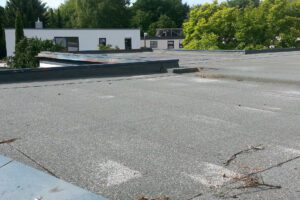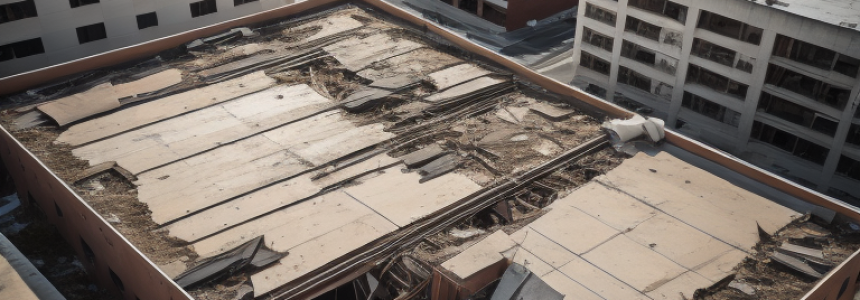

Flat roofs, characterized by their horizontal or nearly horizontal orientation, are a common architectural choice for commercial buildings, modern homes, and industrial structures. Their sleek design, ease of installation, and cost-effectiveness make them a favored option. However, their unique structure also predisposes them to certain problems not common to sloped roofs. Being able to identify and rectify these issues promptly can prevent minor inconveniences from escalating into major problems, thus preserving the structural integrity of the building and ensuring the longevity of the roof.
Leaks are a perennial problem for flat roofs. Unlike sloped roofs where water naturally flows off, flat roofs allow water to pool, increasing the likelihood of leaks, especially if the waterproof membrane has been compromised. Leaks can cause extensive water damage to the interior of the building, including the walls, ceilings, insulation, and electrical systems.
Ponding or standing water is a scenario where water accumulates on the roof and remains stagnant for more than 48 hours. This is often a result of inadequate drainage, leveling issues, or a combination of both. Over time, ponding water can deteriorate the roofing material, leading to leaks and other structural problems.
Alligatoring is a phenomenon where the surface of the roof becomes cracked and bubbled, resembling the skin of an alligator. This is often a sign of an aging roof where the material has lost its elasticity and ability to repel water.
Blistering occurs when bubbles or blemishes form on the surface of the roof due to trapped moisture underneath the roofing material. This trapped moisture can cause the layers of the roofing material to separate, weakening the roof’s structural integrity.
Over time, flat roofs can accumulate debris such as leaves and twigs, which may lead to the growth of moss and algae. This vegetative growth can retain moisture, exacerbate ponding, and eventually deteriorate the roofing material.
Flat roofs are particularly susceptible to damage from extreme weather conditions. Heavy rains can lead to ponding, while snow accumulation can exceed the roof’s load-bearing capacity. Additionally, exposure to UV rays can cause the roofing material to age prematurely.
Improper installation is a major cause of flat roof problems. This includes incorrect installation of roofing material, inadequate sealing at the seams, and poor drainage design, all of which can lead to water infiltration and other issues.
Regular maintenance is crucial for the longevity of a flat roof. Neglecting maintenance can lead to debris accumulation, drainage blockages, and unnoticed minor damages that could escalate over time.
Design flaws such as inadequate slope for drainage, poor material choice, and insufficient insulation can contribute to the myriad problems faced by flat roofs.
Regular visual inspections can help identify emerging problems before they escalate. Property owners should look for signs of damage such as pooling water, cracks, blisters, and vegetative growth.
A professional roof inspection can provide a more thorough assessment of the roof’s condition, identifying potential issues that may not be apparent to the untrained eye. It’s advisable to have a professional inspection at least once a year or after a severe weather event.
Water testing can be a useful method to identify leaks in a flat roof. This involves flooding the roof with water and observing for any signs of water infiltration.
Regular cleaning to remove debris and vegetative growth can prevent blockages and ensure the roof’s drainage system functions correctly.
Scheduled inspections by professionals can catch minor issues before they become major problems. It’s advisable to have these inspections in the spring and fall, before and after the harsh weather conditions of winter and summer.
Promptly repairing identified issues can prevent minor problems from escalating into major repairs or even a full roof replacement.
Ensuring the roof has a well-designed and functioning drainage system can prevent many common problems associated with flat roofs.
Identifying flat roof problems early and addressing them promptly is crucial for maintaining the roof’s structural integrity and longevity. Understanding the common problems, their causes, and how to detect them, along with a commitment to regular maintenance and professional inspections, will go a long way in preserving the functionality and extending the lifespan of a flat roof.
How often should I have my flat roof inspected?
What is the lifespan of a flat roof?
How can I extend the lifespan of my flat roof?
Is it easy to repair a flat roof?
Can I convert my flat roof to a pitched roof?